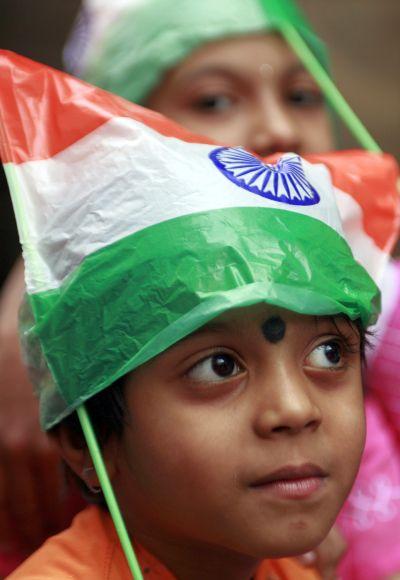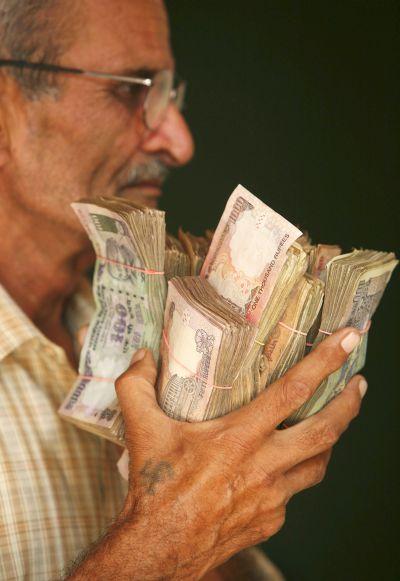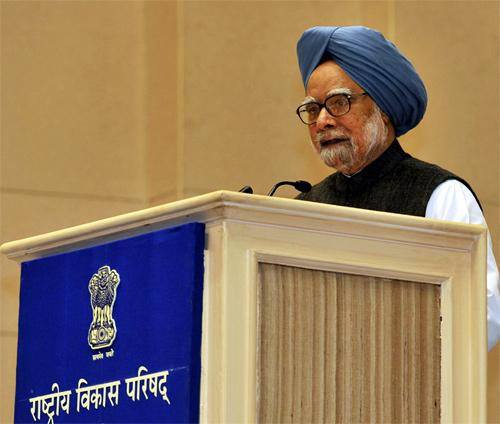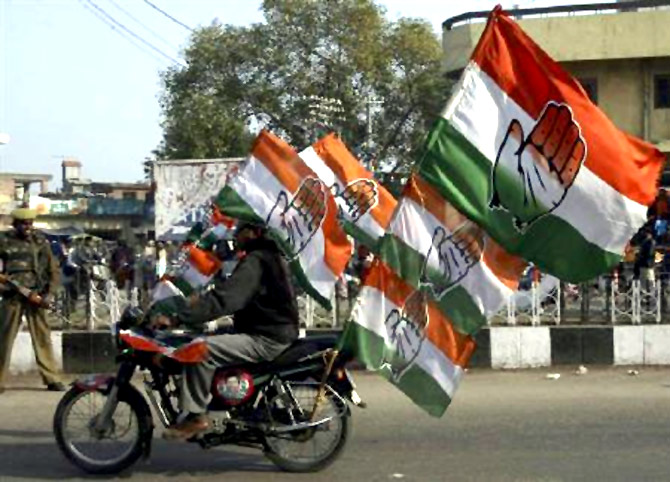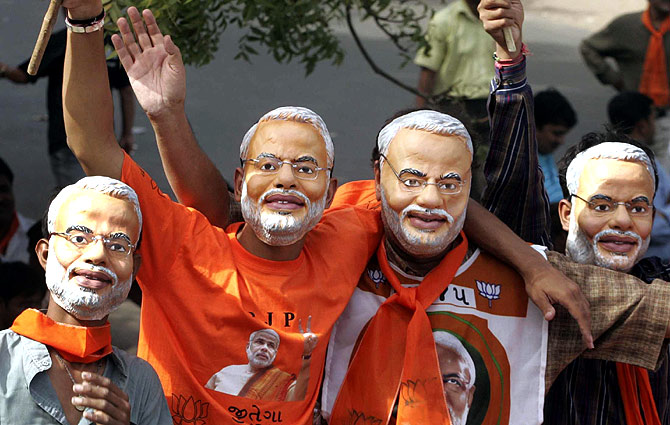 | « Back to article | Print this article |
A sinking economy has put the UPA in trouble
It's the floundering economy that caused the Congress' grievous loss in the Assembly elections, says Nitin Desai.
The verdict of the recent state elections is clear: the Congress party and the United Progressive Alliance (UPA) are in trouble.
Yes, the states involved only 73 parliamentary seats, but the standing of the Congress in the states that were not part of the elections may be even worse. Where did UPA-II go wrong? I submit that the fault lies in its economic policy strategy since 2008-09.
The problem began with the UPA’s misinterpretation of its electoral success in 2009. Influential forces within the party attributed it to the rural anti-poverty programmes and saw in these a way of building up a power base for the Congress among the rural poor.
The possibility that the electoral success may have been because of the economic boom and more jobs for young workers was discounted, though it probably accounts for the continuation of Manmohan Singh as prime minister and the retention of his close economic advisers in their erstwhile positions.
Click NEXT to read more...
A sinking economy has put the UPA in trouble
The 2008-09 global crisis threatened economic growth and was met with a substantial fiscal stimulus. In this lax macroeconomic environment, there was a push for large rural anti-poverty schemes and later, after 2010-11, for big increases in agricultural support prices with their attendant subsidy burden.
Economic policy czars could have resisted this pressure by pointing out that the fiscal stimulus could only accommodate the burden of rising subsidies for a short period, and that when the macroeconomic environment called for fiscal tightening the rising subsidy burden would become a major constraint.
But they did not, perhaps out of complacency given the continuation of high growth for a couple of years, and because of moderate inflation in the first year of the stimulus. But after 2010-11, the economic situation deteriorated rapidly, with growth rates falling, double-digit inflation, rising fiscal deficits and a widening of the current account deficit.
Yet the subsidy largesse continued with more populist schemes, despite the worsening fiscal and economic situation.
Click NEXT to read more...
A sinking economy has put the UPA in trouble
Confronted by this difficult macroeconomic and foreign balance situation, the policy czars started implementing a two-pronged strategy: that of promoting foreign investment and monetary tightening with rising interest rates and liquidity squeezes.
A great deal of political capital was expended on policy changes involving foreign investment, for instance for the retail trade, to little effect. This may have been based on an export pessimism in a recessionary global environment and inelasticity in imports leaving capital inflows as the only way of closing the current account gap.
Monetary tightening did little to control what was clearly supply-side inflation and put a damper on investment.
Decision-making bottlenecks for environmental clearance, land acquisition and coal linkages added to these anti-investment pressures. Confronted by all this and slowing growth, the corporate sector withdrew into a shell; many small units shut shop and the rate of job creation for young workers fell.
Click NEXT to read more...
A sinking economy has put the UPA in trouble
A government that was using up its political capital for promoting foreign investment and monetary stringency had to retain the support of coalition allies, and that led to the tolerance of many scams that surfaced at regular intervals and used up the Manmohan Singh team’s USP of integrity and probity.
The political consequences of these infructuous policies are now clear. Domestic corporations are almost waiting for the end of UPA-II and the emergence of the Bharatiya Janata Party (BJP) under Narendra Modi, a man who assiduously cultivated corporate contacts while the UPA government was clobbering them.
Young workers, who were confronted by a tighter job environment, provided the support for the burgeoning anti-corruption movement.
As for the impact of rural largesse, the UPA misread the changing rural mindset - many people are looking not for the dole but for opportunities.
Look at the result in Rajasthan, where, besides the central schemes, the state implemented additional welfare schemes - yet the electoral outcome for the ruling party was disastrously poor.
Click NEXT to read more...
A sinking economy has put the UPA in trouble
India’s growth potential today is constrained by its politics. The fault does not lie only with the Congress. There is a deeper structural problem in that political expression of interests and sentiments through the party system is getting fragmented.
In 2009, 370 political parties contested the elections and 39 parties are represented in the present Lok Sabha. Two national parties, the BJP and the Congress, get barely 50 per cent of the vote between them.
The explosion in the number of parties reflects the failure of two national parties, the Congress and the BJP, to accommodate regional/caste/religious identity assertion.
The Congress is incapable of tolerating strong regional leaders because of their perceived threat to the party’s apex power structure. The BJP is better able to accommodate strong local leaders, but it is still centralised - thanks to the Rashtriya Swayamsevak Sangh’s ideological controls.
Coalition governance at the Centre is now inevitable. But we have yet to learn the coalition dharma that goes beyond turning a blind eye to the shenanigans of regional partners and builds on the need for a measure of ideological compatibility and an agreement on a common programme as a basis for forming coalition governments.
Click NEXT to read more...
A sinking economy has put the UPA in trouble
A massive swing to the BJP could bring in a more decisive government under Mr Modi. But it may not last long; Mr Modi’s authoritarian style will not work at the central level, where the government has to work through the state governments that have effective implementation authority over development (energy, roads, irrigation, education, health, etc).
He cannot treat J Jayalalithaa, Mamata Banerjee, Nitish Kumar and Naveen Patnaik the same way as he handles his ministers and their departments in Gujarat. Every other alternative promises a weak coalition at the Centre.
But all is not lost. The political system is effectively bipolar at the state level, and the growing weight of performance in voter evaluations is reducing the importance of caste-based politics.
At the present stage of our political evolution, the cause of growth and development would be best served by a lightening of the visible hand of policy control at the Centre, leaving more room for the states to innovate and compete for investment and job growth.
At the same time, measures like the goods and services tax can prevent such competition from becoming dysfunctional, and tight fiscal discipline may help to avoid the dangers of competitive populism.
In the longer run, India’s young voters may move away from identity politics to a party structure crystallised around a right-of-centre party, such as the BJP, and a left-of-centre party, which could be a democratised Congress.
